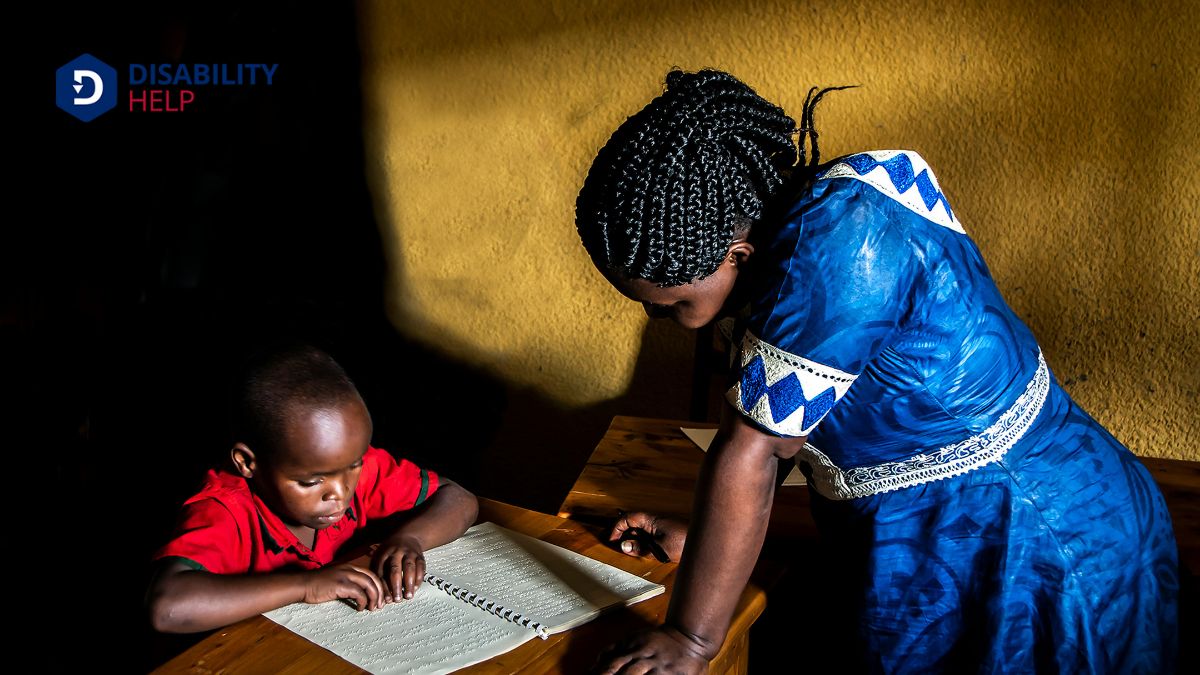Effective inclusive teaching strategies help us create a fair and supportive learning environment for all students. We start by understanding and addressing individual student needs and diversifying our teaching materials to reflect various perspectives. Establishing ground rules for respectful communication guarantees a safe space while encouraging active participation through strategies like think-pair-share and small group discussions. It's also essential to recognize and address our implicit biases. By being approachable and maintaining consistent communication, we build trust. For more insights on promoting inclusivity and continuous improvement in our teaching practices, there's plenty more information to explore.
Key Takeaways
- Recognize and address implicit biases to create an equitable classroom environment.
- Diversify course materials to include multiple perspectives and voices.
- Establish ground rules for respectful communication to foster a safe, inclusive space.
- Use active learning strategies like think-pair-share to encourage participation from all students.
- Continuously seek professional development to stay updated on inclusive teaching practices.
Understanding Inclusive Teaching
Understanding inclusive teaching is vital for creating a learning environment where every student feels valued and supported. Inclusive teaching aims to provide equal opportunities for all students, regardless of their background or identity. By identifying and removing barriers to learning, we ensure that everyone can thrive in the classroom.
One of our primary teaching strategies involves diversifying our teaching materials. This approach allows us to cater to various perspectives, enriching the learning experience for all students. When we incorporate different viewpoints, we acknowledge and respect the diversityThe inclusion of individuals from a wide range of backgrounds, including people with disabilities. within our classrooms. It's essential to recognize that each student has unique needs, and our teaching strategies should reflect that.
Inclusive teaching also has a significant impact on student motivation and engagement. When students see themselves represented in the curriculum and feel their voices are heard, they're more likely to participate actively and succeed. This approach promotes respect and unbiased teaching methods, which are essential to enhancing student participation and overall learning outcomes.
Creating a Safe Environment

Establishing ground rules for respectful communication is necessary for creating a safe environment where all students can express their opinions without fear of judgment. By setting these ground rules, we encourage open dialogue and active listening, promoting a psychologically secure space where students feel valued and understood.
In an inclusive classroom, it's important to provide support for students to voice their concerns and questions. When students know their voices matter, they're more likely to engage and participate actively. This engagement fosters a welcoming atmosphere that benefits everyone.
Setting clear expectations for behavior and interactions is another crucial step. These expectations help maintain a physically and emotionally safe learning environment. When students understand what's expected of them, it reduces misunderstandings and conflicts, allowing everyone to focus on learning.
Moreover, cultivating a culture of empathyThe ability to understand and share the feelings of another, particularly important in understanding... and understanding among students contributes significantly to creating a safe and inclusive classroom. Encouraging empathy helps students appreciate different perspectives and builds a community of mutual respect.
Diversifying Course Content
Diversifying course content is vital for creating an inclusive classroom that resonates with all students. When we incorporate materials from a variety of authors and perspectives, we provide a more holistic view of the subject matter. This approach guarantees that students can see themselves and their experiences reflected in the curriculum, making the material more relatable and engaging.
By using diverse sources, we encourage students to explore the content more deeply. They aren't just learning from a single narrative but are exposed to multiple viewpoints that challenge them to think critically. This critical thinking is essential for their understanding and appreciation of diversity. It helps them compare and contrast different perspectives, fostering a richer educational experience.
Additionally, offering different types of materials, such as audio or video, caters to diverse learning needs and preferences. Not all students learn best through traditional texts, so incorporating these varied formats can make the material more accessible.
Including a variety of authors beyond the traditional sources broadens our students' perspectives. It enriches their learning by exposing them to a wider array of voices and experiences, ultimately preparing them for a diverse world.
Promoting Active Participation
Active engagement is a cornerstone of an engaging and inclusive classroom. When we encourage students to actively engage, we enhance their involvement and promote a deeper understanding of the course material. Inclusive teaching strategies are vital because they guarantee all students, regardless of background, feel encouraged to contribute to discussions and activities.
Providing opportunities for active engagement helps create a sense of belonging and ownership in the learning process. It allows us to assess student comprehension in real time and address any misconceptions promptly. By fostering a collaborative learning environment, we value and respect diverse perspectives, which enrich the classroom experience for everyone.
To promote active engagement, we might use strategies like think-pair-share, small group discussions, or interactive polling. These methods not only engage students but also help them learn from each other's diverse perspectives. It's essential to create a safe space where every student feels their voice matters.
Addressing Implicit Biases
Implicit prejudices, those unconscious attitudes or stereotypes we all carry, can subtly influence our interactions and decisions in the classroom. These biases can shape how we perceive and engage with our students, often without us even realizing it. To foster truly diverse classrooms, we need to address these biases head-on.
Inclusive teaching strategies start with acknowledging the presence of implicit biases. By recognizing them, we can take steps to make sure they don't negatively impact our teaching. One effective approach is undergoing training specifically designed to uncover these biases. Training sessions can provide valuable insights and tools to help us become more aware of our unconscious attitudes.
Self-reflection is another vital step in addressing biases. Taking time to reflect on our own beliefs and practices allows us to identify areas where we might inadvertently favor or disadvantage certain students.
Dialogue with colleagues and students can also be enlightening, offering different perspectives and fostering a more inclusive environment.
Leveraging Technology

Addressing our implicit biases lays the groundwork for creating a more inclusive classroom. Once we've done that, we can leverage technology to enhance our inclusive teaching strategies. Technology offers various tools that can promote student engagement and cater to diverse learning needs. Here are four ways we can use technology to create a more inclusive learning environment:
- AccessibilityThe design of products, devices, services, or environments to be usable by people with disabilities.... Options: Tools like screen readers and captioning services help students with disabilities access course materials more easily.
- Interactive Learning: Platforms offering quizzes, polls, and discussion boards can increase student engagement and participation.
- Personalized Learning: Adaptive learning technologies can tailor educational content to meet individual student needs, helping each learner progress at their own pace.
- Diverse Learning Styles: Multimedia resources (videos, podcasts, and interactive simulations) address different learning preferences, making content more accessible to everyone.
Building Student Relationships
When we build strong relationships with our students, we enhance trust and create a foundation for personalized engagement.
By connecting on a personal level, we foster a sense of belonging that supports their academic success.
Let's explore how trust and rapport building can transform our classrooms into dynamic, inclusive environments.
Trust and Rapport Building
In building an inclusive learning environment, trust and rapport with our students are absolutely essential. When we focus on building trust and establishing a strong rapport, we create a classroom where every student feels valued and heard. This inclusive environment fosters engagement and motivation, leading to better learning outcomes and a more dynamic classroom. Here are some effective strategies:
- Actively Listen: Pay attention to students' needs and concerns. This shows that we value their student voice, making them feel more at ease sharing their thoughts.
- Show Empathy: Understanding and sharing the feelings of our students helps in building trust. When students see that we care about their well-being, they're more likely to participate.
- Be Approachable: Create an open-door policy and encourage students to reach out. When we're approachable, students feel safer and more willing to participate.
- Consistent Communication: Keep the lines of communication open. Regular check-ins and feedback sessions help strengthen rapport and guarantee that students feel supported.
Personalized Student Engagement
Having established a foundation of trust and rapport, we can now focus on personalized student engagement to further strengthen our classroom dynamics. Personalized student engagement means recognizing each student's unique needs and tailoring our teaching approaches accordingly. By doing so, we can foster a sense of belonging and trust, which are essential components of inclusive learning.
To effectively engage students, we should aim to understand their backgrounds, interests, and learning preferences. This understanding allows us to create lesson plans that aren't only inclusive but also motivating and participative. When students feel seen and valued, their academic performance and overall well-being improve markedly.
One way to achieve this is by incorporating student feedback into our teaching methods. Asking students about their interests and learning styles can guide us in designing activities that resonate with them. Additionally, using varied teaching approaches—such as group work, hands-on activities, and technology integration—can cater to diverse student needs and keep everyone engaged.
Ultimately, effective inclusive teaching strategies prioritize student engagement and connection. By committing to personalized student engagement, we create a classroom environment where every student feels included, motivated, and ready to succeed.
Continuously Improving Practices

To continuously enhance our inclusive teaching practices, we need to embrace reflective teaching, seek professional development, and make student-centered adjustments.
By regularly evaluating our methods and incorporating feedback from students and colleagues, we can adaptA grassroots disability rights organization in the U.S. that focuses on promoting community-based se... our strategies to better meet diverse needs.
Let's prioritize ongoing learning and reflection to guarantee our teaching remains effective and inclusive.
Reflective Teaching Practices
Ever wondered how we can continually improve our teaching methods to better support our diverse student population? Reflective teaching practices are a powerful way to [GUARANTEE] our classrooms are inclusive and effective. By regularly analyzing and evaluating our teaching methods, we can identify areas for improvement and make adjustments that enhance inclusivity.
Here are four key benefits of incorporating reflective teaching into our strategies:
- Identify Biases: Reflective teaching helps us understand our own biases and assumptions, which can impact student engagement and success.
- Enhance Student Engagement: By continuously reflecting on our practices, we can implement inclusive teaching strategies that foster a more engaging learning environment.
- Promote Inclusivity: Reflective practices allow us to create a welcoming and supportive atmosphere for all students, catering to diverse needs and backgrounds.
- Support Continuous Improvement: Ongoing reflection [GUARANTEES] Our teaching methods evolve, promoting continuous improvement and student growth.
Through continuous reflection, we can pinpoint behaviors and methods that need adjustment. This approach not only improves our teaching but also supports a diverse and inclusive classroom environment. Let's commit to regular self-evaluation and embrace the journey of growth and improvement.
Professional Development Opportunities
Professional development opportunities are necessary for educators aiming to continuously improve their inclusive teaching practices. These opportunities equip us with the training, resources, and support needed to implement effective inclusive teaching strategies. By engaging in professional development, we can learn about evidence-based practices and innovative approaches that enhance our teaching.
Continuous learning through professional development is vital for fostering student engagement and success in our inclusive classrooms. When we stay updated with the latest research and techniques, we can better address the diverse needs of our students. This ongoing learning not only benefits our students but also enriches our professional growth.
Collaborative professional development, in particular, fosters a community of practice dedicated to inclusive teaching excellence. By working together, we can share insights, challenges, and successes, creating a supportive network that strengthens our collective teaching practices. This collaboration helps us refine our strategies and stay motivated in our mission to provide equitable education for all students.
Ultimately, investing in professional development ensures that we're well-prepared to meet the evolving needs of our classrooms. Let's embrace these opportunities to learn, grow, and excel in our inclusive teaching endeavors.
Student-Centered Adjustments

In our pursuit of inclusive teaching excellence, we must prioritize student-centered adjustments by continuously refining our practices. Students must feel valued and supported in learning environments tailored to their diverse needs. To achieve this, we can adopt various research-based principles for smart teaching adjustments, guaranteeing that everyone has the opportunity to succeed.
- Tailored Teaching Methods: Adapt instruction techniques to cater to different learning styles, such as visual, auditory, and kinesthetic learners. By doing so, we can reach more students effectively.
- Flexible Materials: Provide a variety of learning materials, including multimedia resources and hands-on activities. This variety guarantees that students can engage with the content in ways that best suit their learning preferences.
- Diverse Assessments: Use multiple forms of assessment, like projects, presentations, and traditional tests, to give students various ways to demonstrate their understanding and skills.
- Ongoing Feedback: Regularly gather and implement student feedback to refine teaching practices. This continuous reflection and adaptation create more responsive and inclusive learning environments.
Frequently Asked Questions
What Are Inclusive Teaching Strategies?
Inclusive teaching strategies create equitable learning environments. We diversify course materials, foster belonging, and promote respectful discussions. By being aware of biases and participation imbalances, we enhance student motivation, engagement, and success, benefiting everyone involved.
What Is the Best Example for Inclusive Education?
The best example of inclusive educationEducational practices that integrate students with disabilities into general education classrooms, s... is incorporating diverse perspectives in course content. By doing this, we guarantee all students see themselves represented and valued, fostering a more inclusive and respectful learning environment for everyone.
What Is an Example of Inclusive Practice in the Classroom?
Let's diversify our reading lists to include authors from various backgrounds. This broadens perspectives and enriches learning. By doing this, we create a more inclusive classroom where every student feels recognized and valued.
How Can I Make My Teaching More Inclusive?
We can make our teaching more inclusive by incorporating diverse perspectives, setting respectful ground rules, adapting methods for different learning styles, fostering a sense of belonging, and regularly reflecting on our practices to eliminate biases.
Conclusion
By embracing inclusive teaching strategies, we can create safer, more engaging, and diverse learning experiences for all students. By addressing implicit biases, leveraging technology, and fostering strong relationships, we actively promote an environment where every student feels valued. Let's continuously improve our practices, ensuring we meet the needs of our diverse student body. Together, we can make a meaningful impact and cultivate a truly inclusive educational community.






